I first set foot in the Sheldonian Theatre in the October of 1973 for my matriculation ceremony, when no doubt I had the pleasure of listening to the Harrison & Harrison pipe organ that was then still in use at the time.
Back then, the ‘organ bug’ had not taken hold, so I very much doubt I paid much attention to the instrument’s contribution to the ceremony. I certainly had no idea that 52 years later I would be crawling about inside the pipe case, wiring up speakers to a new instrument I would later have the pleasure of playing at the venue.
Tracing the organ’s history
The history of organs in the Sheldonian Theatre is quite interesting. The current case dates from the late 19th century, although in appearance, one might think it was 150 years older. It was designed by T.G. Jackson, who also designed the organ case at Brasenose College, and indeed there are similarities.
The first instrument there was apparently a single manual instrument made by Bernard Smith in 1671, just 2 years after the building designed by Christopher Wren was completed. In 1726, John Harris installed a new instrument, which over the next 150 years saw a series of changes taking place, until a substantial 3 manual, 29-stop Willis instrument was installed in 1877, when the new – but period design – pipe case was built to the Jackson design. The case then was actually far wider including two pedal towers as shown in this old image. One must assume these were removed to reinstate the windows that they had covered up.
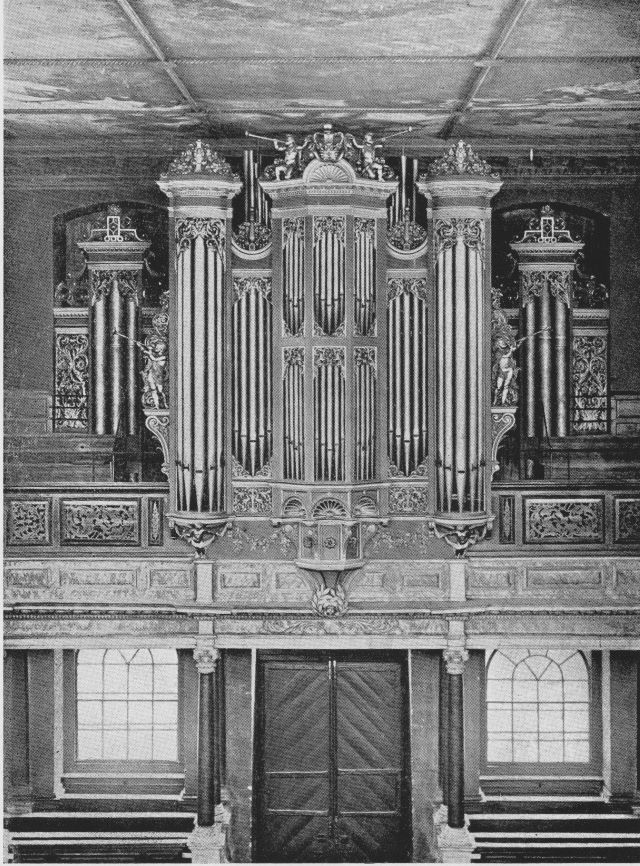
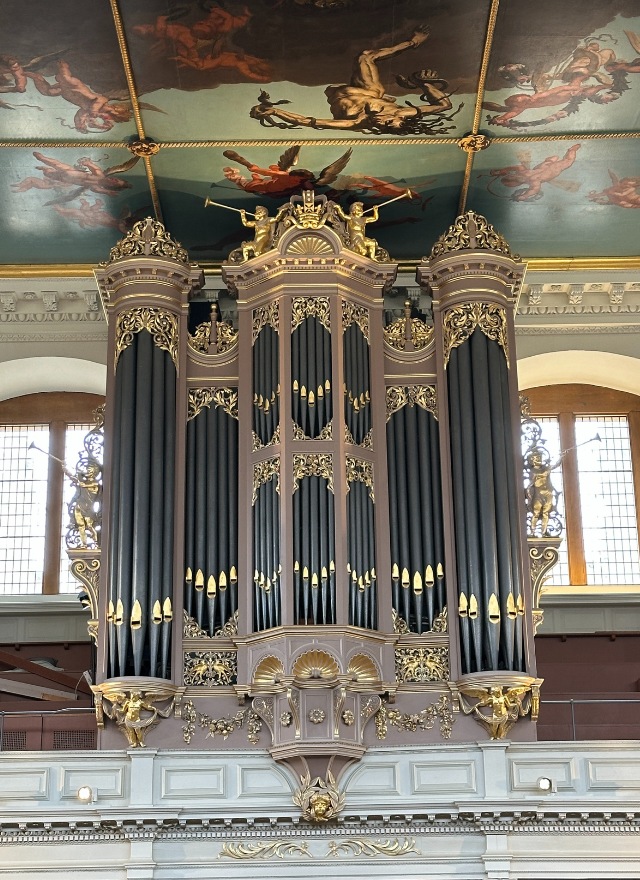
This instrument was enlarged in 1927, by Henry Willis II and again in 1947 when it had 33 speaking stops and tremulants. The substantial remnants of a pipe organ today that remain inside the pipe case date from a further rebuild in 1963 by Harrison and Harrison.
Engineering challenges in a historic venue
The Harrison and Harrison console remains in the basement and I was delighted to be taken to see it, and to take some pictures that reveal what was the final specification. It must be said that the engineering to fit all this inside the case is bewildering. It is crammed to the gunnels with wind reservoirs, one actually mounted directly above the pipe work just inches under the building’s beautiful painted ceiling. Tuning must have been a regular nightmare.
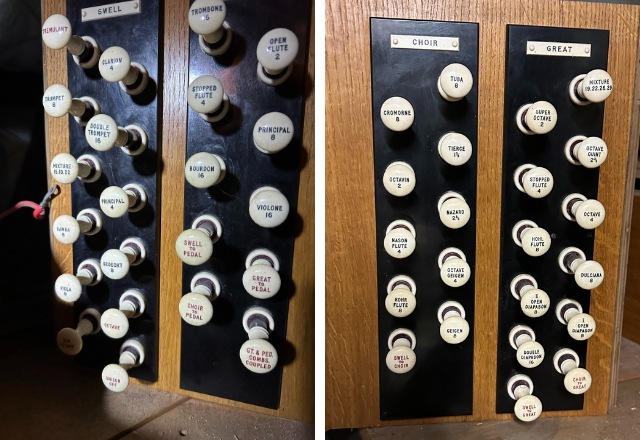
The swell box is hard against a south facing wall so experienced very large temperature changes during long summer days. There is also a humidifier the size of a chest freezer beside the pipe case, further evidence of the challenges faced keeping this now electric action instrument in reliable playing condition.
By the end of the 20th century, the organ had sadly fallen into disrepair, and a very radical option to replace it with an electronic instrument was taken. I have no knowledge of the background that led to that decision, but it was a ground-breaking instrument with near space age design, so perhaps the feeling was to embrace what technology had to offer to overcome very difficult environmental conditions and no doubt a massive bill to restore the pipe instrument. Simon Preston was heavily involved in the project. I recently learnt he gave a private demonstration of the sound to an assembled gathering, changing the instrument style from German to French and English. Apparently, it was not enthusiastically received.
A cutting-edge digital organ for a new era
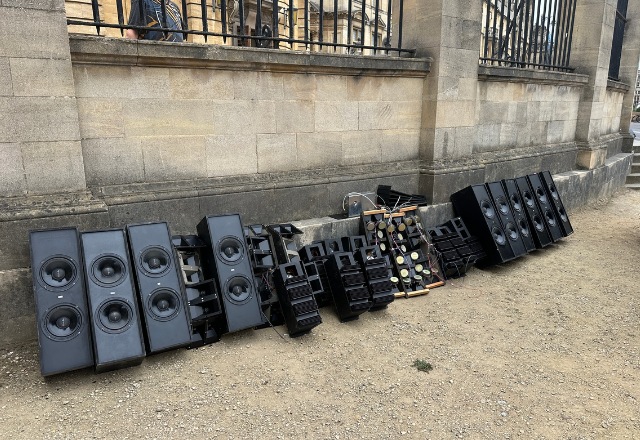
The new digital solution, installed in 1999, was built using the Bradford technology and was innovative in every way. Its 26 separate audio channels drove 112 separate speakers spread throughout the pipe case. The 4-manual console with discs to switch stops on and off. Digital displays above the discs told you what stop name was playing.
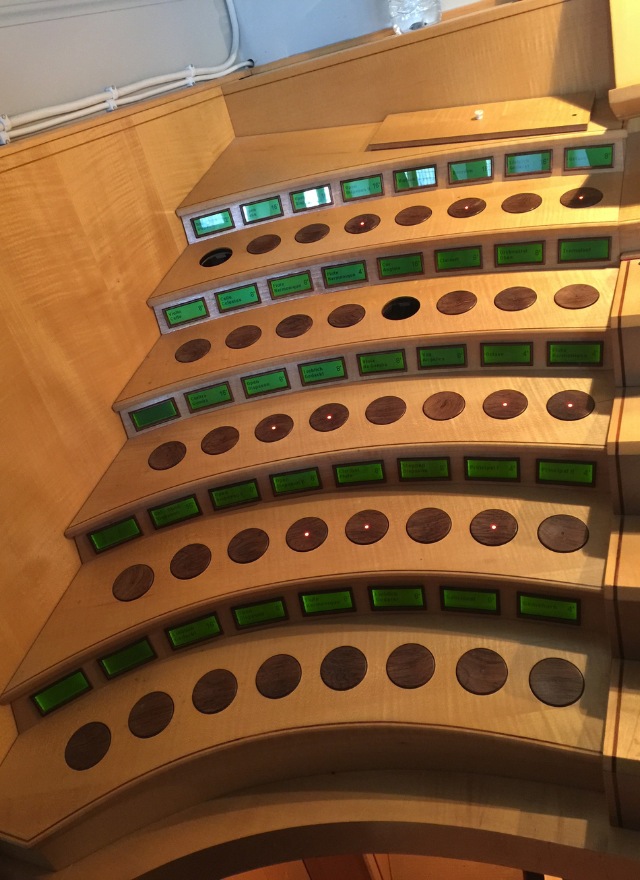
The instrument was both cutting edge in terms of console and audio design, and perhaps for this reason, was accepted as a reasonable alternative to yet another rebuild of the pipe organ.
A return visit and unpleasant surprises
By 2016, the instrument had become very unreliable and was no longer in regular use, so I offered to see what might be done to give it a new lease of life.
On entering the pipe case I was shocked to see so much damage to what remained of the pipe organ. Part of this was undoubtedly due to carving out space for the speaker system but much just looked like careless and avoidable damage that was sad to see.
Let me reassure you that were we to be offered a similar job today great care would be taken to preserve and store all pipework of historic significance, as we would want to maximise the possibility that one day the pipes would speak again. That seems not to have been the case by the people installing the instrument back in 1999.
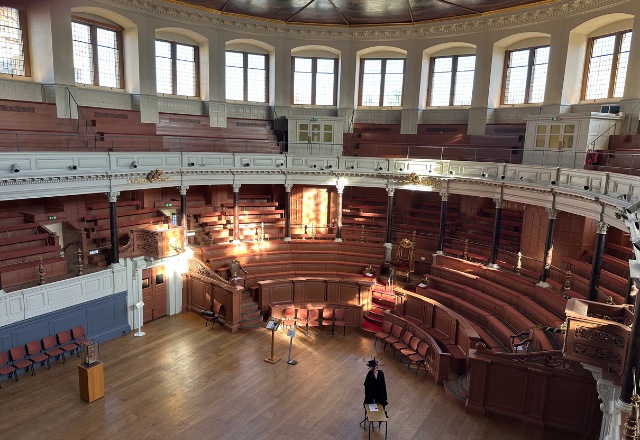
Planning for the future
While the speaker array remained in good condition, it was amplification and sound generation equipment that had failed. All of this was virtually inaccessible, concealed under the stage seating between the pipe case and the console. Like many pipe organs, 80% of the work time was spent just getting access to what needed repair rather than doing the work.
So, I advised a major redesign to ensure that future maintenance was easy, but funding continued to prove difficult. The instrument limped on and finally the decision was made to start again with a completely new instrument as a stop gap to a future point when hopefully the pipe organ will finally be rebuilt.
I am delighted that our instrument is now installed and ready for the university ceremonies that will start in the autumn. You can listen on this video to the Viscount Envoy 350-FV after it was installed but before final voicing. In a few weeks time I will write about the voicing process and the decision we took to create an instrument more in keeping with the size and style of the organ case. Should there be fewer stops or should we offer more sound colours and rely on the organist not to use too many stops at the same time? A very academic problem but then we are in a very academic city.
I have had a passion for church organs since the tender age of 12. I own and run Viscount Organs with a close attention to the detail that musicians appreciate; and a clear understanding of the benefits of digital technology and keeping to the traditional and emotional elements of organ playing.
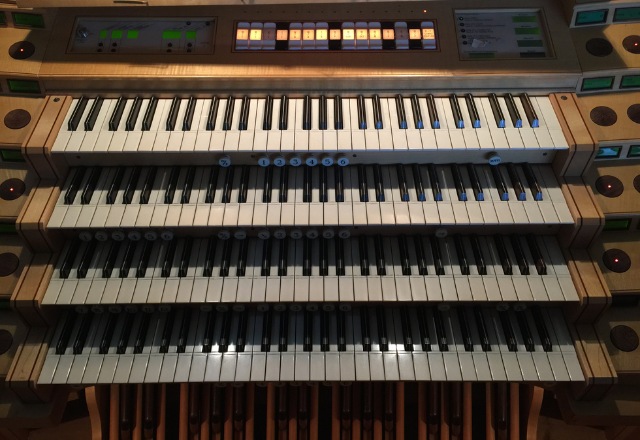



Leave a Reply